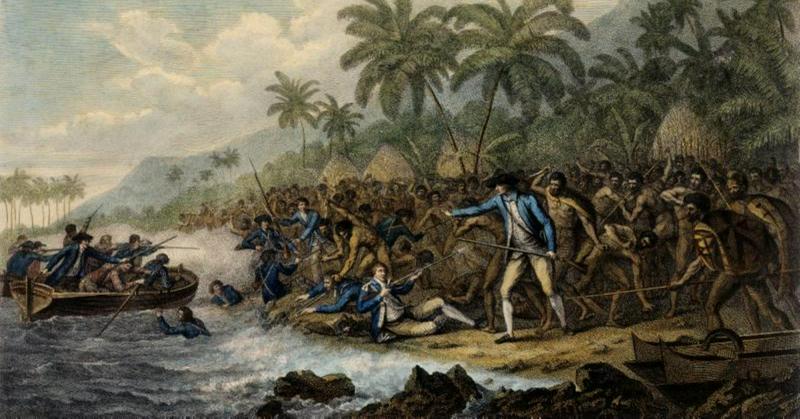When Explorer James Cook Discovered Hawaii And Was Boiled By Natives
By | January 16, 2021

James Cook was one of the most prolific British sea captains, navigators, and explorers during the Age of Exploration. He traveled as far away as Australia, the Bering Straits, and the Antarctic ice shelves, but when he became the first European explorer to visit the Hawaiian Islands, it really got real.
Who Was James Cook?
James Cook was born into a farming family on October 27, 1728 in Yorkshire, England. He was by all accounts a smart and inquisitive child, and by the time he was a teen, Cook spent his summers running trade routes in the North Sea as the apprentice of a notable Quaker shipowner in Whitby and the colder months reading and studying. Having proved himself an able sailor, he was soon offered command of his own ship and spent the next eight years at sea before volunteering for the Royal Navy, where he quickly rose through the ranks.
For a time, the Royal Navy stationed Cook in Nova Scotia, where he surveyed the coasts of the Maritime Islands and observed a solar eclipse in 1766. Cook had a lifelong interest in science and particularly astronomy, so he took detailed notes of the event, which he sent to the Royal Society of London. It was a highly unusual move for a non-commissioned officer, blazing Cook's name into the Society's memory when they later planned their first expedition of the Pacific Ocean.

Finding Hawaii
Then 40 years old, Cook was tapped to command the expedition and given a ship, the H.M.S. Endeavour, to transport several members of the Royal Society as well as their assistants and equipment. Cook sailed the Endeavour all around the world, but the bulk of his voyages were concentrated into the South Pacific. In January 1778, he and his crew happened upon the Hawaiian Islands, which they called the Sandwich Islands after one of Cook's patrons, John Montague, the Earl of Sandwich.
The crew returned to Hawaii in November and spent several weeks sailing from island to island, surveying the land, replenishing their supplies, and recording scientific observations. When Cook landed at Kealakekua Bay, its residents were in the middle of a large festival and believed the crew were gods, particularly Lono, a Hawaiian deity the islanders believed would return in a similar fashion.

Preserved, Not Cannibalized
Cook and his crew took full advantage of the natives' hospitality and worship, so after a crew member died and thus revealed himself mortal, they had a lot of explaining to do. They apparently failed, as the Hawaiians started hurling stones at Cook and his ships and even stole one of Cook's smaller boats. Cook appealed to the Hawaiian chief to arrange for the boat's return, but after things went South, the chief was shot dead and an angry mob of Hawaiians went scorched earth on the Europeans.
After Cook was stabbed in the neck and died on the beach, the Hawaiians took his body back to their village, boiled his corpse, and scraped the meat from his bones, leading to rumors of cannibalism. In reality, the Hawaiian natives simply believed a person's power and spirit resided in their bones, and boiling is an efficient (if gruesome) method of removing flesh from them, a requirement for their preservation as religious artifacts. Yeah: The islanders were still pretty sure Cook was godly, so they treated his remains as such before returning them to his crew, who buried him at sea in Kealakekua Bay.

